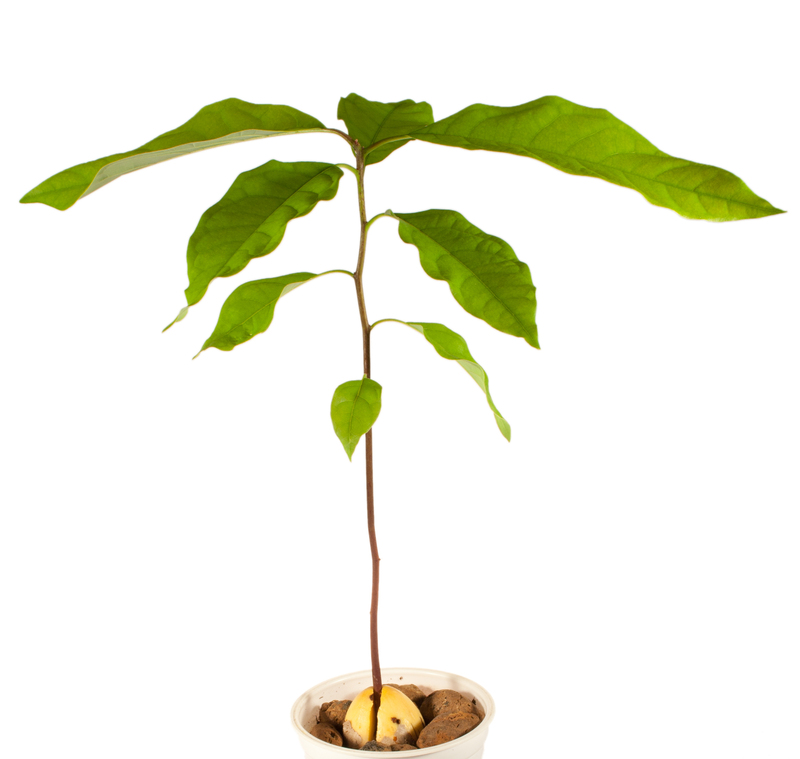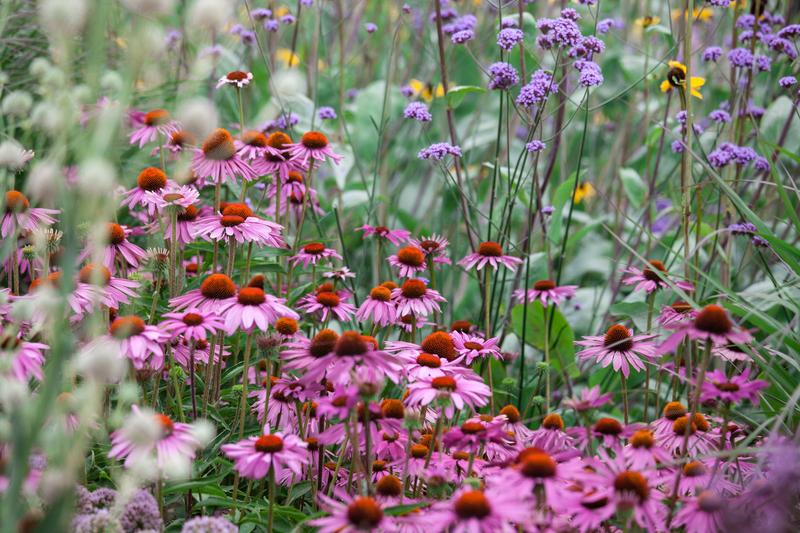Step-by-Step: Keep Your Garden Alive Through Winter
Posted on 09/09/2025
Step-by-Step: Keep Your Garden Alive Through Winter
Are you worried about your winter garden surviving the cold months? Do you wish to keep your garden alive through winter and ensure your plants thrive come spring? You're not alone. Many gardening enthusiasts face challenges as temperatures plummet and daylight disappears. With the right preparation, your garden can not only survive but flourish through winter and bounce back better than ever in spring. In this comprehensive, SEO-optimized guide, we'll show you step-by-step how to safeguard your outdoor oasis, so you and your plants emerge from winter ready for a new growing season.
Understanding Winter's Impact on Your Garden
Before delving into detailed winter garden protection steps, it's crucial to understand how winter affects your garden. Even the hardiest plants face threats such as:
- Freezing temperatures that damage roots and leaves
- Frost heaving caused by repeated freezing and thawing cycles
- Desiccation or drying out due to cold winds and low soil moisture
- Heavy snow and ice weighing down branches or breaking stems
- Pest and disease issues that thrive in hidden winter environments
Understanding these threats is the first step in preparing your garden for winter.

Step 1: Plan & Assess Your Winter Garden Needs
Every garden and climate zone is unique. Begin by:
- Identifying which plants are most vulnerable in your garden (annuals, tender perennials, container plants)
- Noting the USDA hardiness zone for your area, which guides plant survival rates
- Reviewing your garden's microclimates: south-facing beds, windy spots, low-lying wet areas
- Checking current weather conditions and long-term forecasts
- Inventorying garden supplies such as mulch, covers, containers, and plant supports
Knowing what needs protection and where will help you strategize the right winter garden solutions.
Step 2: Clean Up and Prepare Your Garden Beds
A tidy garden is a healthy winter garden. Prepare by:
- Removing dead annuals, diseased foliage, and garden debris to prevent overwintering pests and diseases
- Pruning back perennials though, leave some stalks for wildlife habitat and visual winter interest!
- Raking fallen leaves--use healthy leaves as mulch, but compost those with signs of disease
- Edge beds and clean borders for a neat, tidy appearance
Tip: Avoid heavy pruning on trees and shrubs right before winter, as this can stimulate new growth vulnerable to frost.
Step 3: Apply Mulch for Insulation
A critical part of keeping your garden alive through winter--and one of the easiest!--is applying mulch.
- Mulch helps insulate plant roots from severe temperature swings
- It moderates soil moisture, preventing winter dryness
- Organic mulches slowly break down, feeding the soil
How to Mulch for Winter:
- Spread a 2-4 inch layer of mulch (shredded bark, leaves, straw) around perennials, shrubs, and trees
- Avoid piling mulch directly against stems or trunks to reduce rot
- For extra protection in extremely cold areas, use evergreen boughs or frost blankets on top
Step 4: Water Wisely Before the Deep Freeze
Moisture is vital for plant survival during winter. Dry soil increases the risk of root damage.
- Thoroughly water garden beds before the ground freezes, especially for evergreens and newly planted specimens
- Avoid overwatering: once soil is frozen, watering is ineffective and may cause root rot if unseasonal thaws occur
- In dry winters, consider supplemental watering during warm spells
Remember, healthy, hydrated roots withstand the stress of freezing temperatures better.
Step 5: Protect Vulnerable and Tender Plants
Not all plants can weather harsh winters unaided. Here's how to safeguard your tender perennials and annuals:
- Dig up and overwinter tender bulbs: Gladiolus, dahlias, cannas, and similar types should be lifted, cleaned, and stored in a dry, cool spot
- Move container plants indoors or into a shed/garage where temperatures stay above freezing
- Wrap exposed containers in bubble wrap or burlap for insulation
- Build simple cold frames or use cloches and row covers for added protection against frost
- For prized perennials and roses, mound extra mulch or use rose cones
Pro Tip: Grouping potted plants together near a sheltered wall provides extra warmth.
Step 6: Shield Trees and Shrubs from Winter Damage
Protecting trees and shrubs will keep your garden healthy and attractive through winter and well into spring:
- Wrap trunks of young or thin-barked trees (like maples and fruit trees) with tree wrap or burlap to prevent frost cracking and animal damage
- Shield evergreens from winter burn by applying an anti-desiccant spray
- Brush off heavy snow gently from branches; do not shake, as ice-laden limbs may break
- Stake young trees if heavy snow, wind, or ice is common in your area
Keep an eye on your trees and shrubs during thaws, too, when they may need water or structural support.
Step 7: Care for Your Winter Lawn
Don't neglect the grass while keeping your garden alive through winter. A healthy winter lawn sets the stage for lush spring growth.
- Fertilize in late fall with a slow-release, high-potassium winter lawn feed
- Remove leaves and debris to prevent molds and bare patches
- Avoid walking on frosty grass to prevent damage
- Limit salt or ice-melt products near grassy edges, as run-off can harm lawns
Step 8: Welcome Wildlife and Beneficial Insects
A thriving winter garden supports not just plants, but also helpful fauna:
- Leave seed heads and ornamental grasses for birds and pollinators
- Set up bird feeders and water sources, refilling regularly
- Consider building bug hotels or leaving small piles of logs for overwintering insects
Encouraging biodiversity will help your garden manage pests naturally in the spring.
Step 9: Maintain Your Tools and Equipment
Winter is the perfect time to clean and store garden tools, ensuring a head start for next season:
- Clean, sharpen, and oil hand tools to prevent rust and prolong life
- Store hoses drained and coiled out of the elements
- Check and service lawnmowers and other powered equipment
- Organize your storage shed and take inventory of seeds and garden supplies
Step 10: Monitor and Adjust Throughout the Winter
Even the most well-prepared garden may face unusual winter weather events. Inspect your garden periodically:
- Look for plant heaving and add more mulch as needed
- Check protective coverings after storms, replacing them if damaged
- Water during warm, dry spells if the ground isn't frozen solid
- Watch for pests seeking shelter in your mulch or containers
Flexible, ongoing care is key to ensuring your entire garden survives and bounces back beautifully.
Special Tips for Different Types of Gardens
Vegetable Gardens
Many cool-season crops like kale, carrots, and leeks tolerate cold and can be overwintered with row covers or cold frames. Harvest as needed, and mulch around roots for added insulation. For spring readiness, sow cover crops (such as clover or winter rye) to enrich the soil.
Herb Gardens
Pot up tender herbs like basil or rosemary and bring them indoors. Hardy herbs (like thyme and sage) survive outdoors if mulched well. Trim lightly and avoid heavy harvesting in late fall.
Flower Beds
Deadhead spent flowers, but leave some seed heads for wildlife. Newly planted perennials benefit from extra mulch. In extreme climates, use garden blankets or straw.
Container Gardens
Insulate pots and group together for maximum protection. Water sparingly--container soil dries out quickly even in winter. Move to sheltered areas or indoors when possible.
Frequently Asked Questions (FAQs)
Will all my plants survive winter if I follow these steps?
While no method is foolproof, providing winter protection significantly improves your garden's survival rate. Native and hardy plants fare best. Consider replacing very tender species with hardier alternatives for easier maintenance.
When should I begin preparing my garden for winter?
Start cleanup and mulching after the first frost, but before the ground freezes. Preparation varies by region, so monitor your local climate.
Is watering necessary during winter?
Yes, especially for evergreens and new plantings. Water deeply before the ground freezes and during winter thaws if conditions are dry.
What kind of mulch is best for winter protection?
Organic mulch such as shredded bark, leaves, straw, or compost is excellent. It insulates, improves soil structure, and enriches soil as it breaks down.

Conclusion: Grow a Stronger Garden Every Winter
Keeping your garden alive through winter is both a science and an art--one that brings rewarding results. By taking these step-by-step winter gardening measures, you'll not only safeguard your landscape but enhance soil fertility, foster beneficial wildlife, and set the stage for a vibrant spring. The secret lies in proactive care, attention to detail, and a willingness to adapt as winter unfolds.
For continued success, make winter garden protection an annual tradition--your plants (and the local ecosystem) will thank you.
- Assess your garden's needs
- Prepare beds and apply mulch
- Water wisely
- Shield your vulnerable plants
- Care for your lawn and welcome wildlife
- Keep tools ready for spring action
Now you're ready to keep your garden alive through winter with confidence and skill!
Related Reading
- 10 Essential Tools for Winter Gardening
- Best Plants and Shrubs for Winter Interest
- Comprehensive Guide to Overwintering Perennials
Ready your gloves and mulch--your winter garden awaits!

